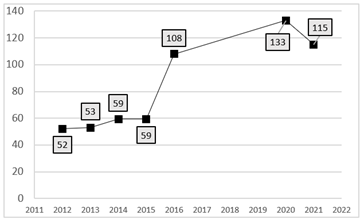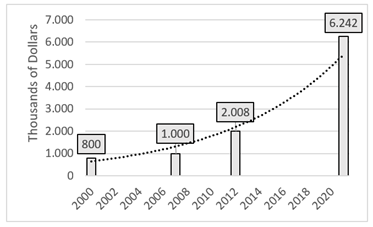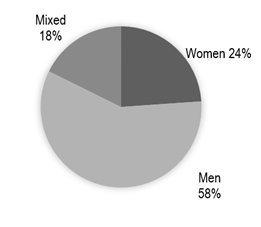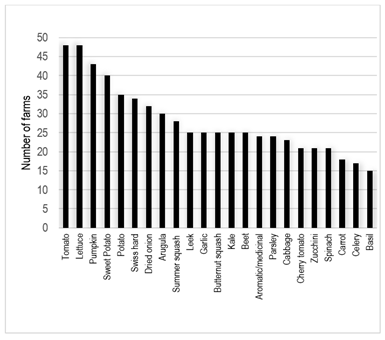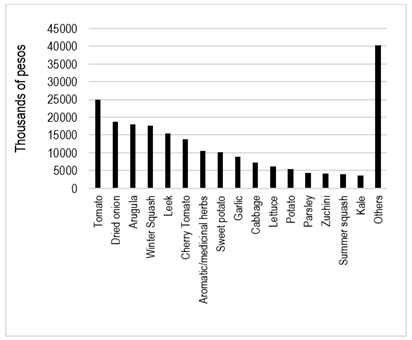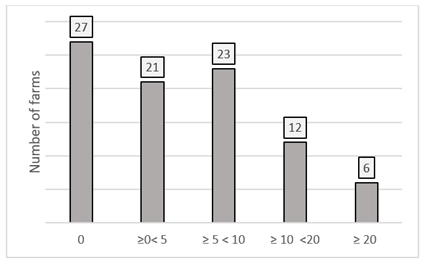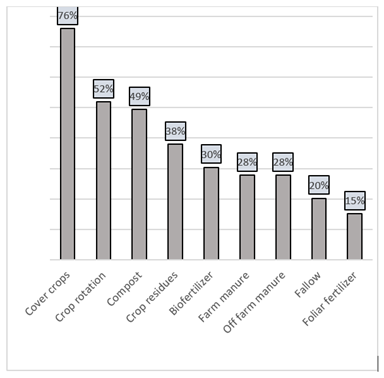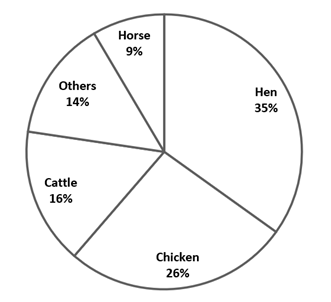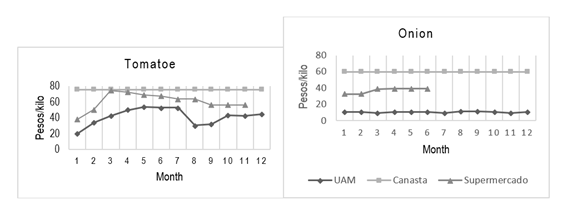1. Introduction
In the context of the current corporate food regime, the dominant conventional agriculture model deploys a series of socio-environmental impacts associated with global and local phenomena1. The intertwining of impacts, the impossibility of control and the unpredictability are part of an unprecedented structural-civilizational crisis 2)(3) . Faced with this situation, various movements for change and actions are questioning and building forms of resistance, alternative relationship frameworks and sustainable proposals for food production systems. Agroecology integrates a diversity of actors and transformative actions for social change. Sevilla Guzmán and Montiel 4) propose agroecology as a sociocultural matrix that emerges from the dialogue between scientific and popular knowledge, in order to build new understandings critical of the industrial agriculture model and generate transformative proposals. These proposals generate ecological and social principles that adopt specific technical forms of organization, participation and action 3)(5) , enabling the construction of transformation strategies to influence and change the root causes of the crisis, in which production units are immersed and in conflict. Advancing towards higher levels of social justice occurs through a harmonious society-nature articulation2. Wezel and others6 argue that agroecology involves several approaches to address current challenges in agricultural production. While initially focused mainly on aspects of crop production and protection, in recent decades, new dimensions such as environmental, social, economic, ethical, and developmental issues have become relevant. Nowadays, the term agroecology incorporates and integrates perspectives as a scientific discipline, agricultural practice, and as a political or social movement.
Agroecological production systems are based on a series of ecological principles focused on promoting diversity, resilience, recycling, synergies, reducing losses, promoting animal welfare and health 3)(5) , as well as social principles. Creating collective knowledge and capacities for adapting to networks, promoting autonomy options related to markets, strengthening democratic governance by generating systems co-managed by producers and citizen-consumers, promoting diversity and participation both in the identification of problems and in the search for solutions. It also focuses on achieving good living, working and income conditions, establishing social roots for these food systems, promoting physical, intellectual and economic access to local food, having participatory mechanisms for knowledge creation and access in a dialogue of knowledge and intergenerational and gender perspective, together with the promotion of democratic decision-making, with balanced power relations 5)(7) .
In Uruguay, agroecology has a background of more than thirty years8, with growing public and private recognition from the agricultural and consumer sectors; agroecological production systems have seen significant development in recent decades. This background allowed the generation of the public policy Law 19.717 "Plan for the promotion of production with agroecological bases"9. In the explanatory memorandum for the presentation of the law, it is stated that agroecology "emerges as a science that brings together contributions of different ecological and social scientific disciplines, integrating and applying traditional knowledge and cultural practices of farmers to design and manage productive, diversified and resilient agroecosystems with the aim of achieving food sovereignty and social justice".
1.1 Importance of family farming
Carámbula Pareja 10) points out that the changes occurring in the Uruguayan countryside imply substantive transformations in the agrarian structure, characterized by the speed, intensity, and spatiality and the multiple dimensions involved. The globalization process has generated transformations that are evident in the consolidation and expansion of agro-industrial chains and complexes, as well as diverse transformations in the technological and scientific fields. This has led to an increasingly pronounced differentiation between export-oriented agricultural entrepreneurs and family producers linked to the domestic market. It has also resulted in changes in political relations among and from business actors; transformations in the labor market; concentration, anonymity, and foreign ownership of land, and access to and use of natural resources (such as land and water) with environmental fragility in production systems.
In short, within this context, a declining trend in family farming is consolidated in the second half of the century in terms of the number of farms and the number of farmers.
Van der Ploeg11 proposes the existence and mobility between different modes of agricultural production, based on the different ways in which the social and the material aspects are ordered, where the forms of agricultural exploitation determine the magnitude of added value and its redistribution, as well as the connection with nature, the quality and sustainability of the production process, and the resulting food. The author discusses some characteristics of farmers such as the struggle for autonomy in a context characterized by relationships of dependence, marginalization, and deprivation. The creation and development of a resource base controlled and managed by farmers allow the establishment of forms of coproduction between people and nature. Interaction with market strategies contributes to their economy, along with feedback and strengthening of the resource base enabling improved coproduction processes, increased autonomy, and decreased dependence, highlighting key aspects of mobility and permanence.
Ultimately, the absence of data in national statistics on these agroecological family farming systems emphasizes the importance of knowing, characterizing, analyzing, and presenting information as a first step to guide transition strategies in a dynamic and open direction12.
The Agroecology Network of Uruguay (RAU, Red de Agroecología del Uruguay) was created in 2005 and integrates various actors who share a positive and comprehensive vision of the social, economic, and environmental impacts of agroecology13. It brings together 513 people, mainly family farmers from the south of the country, of which 114 farms are certified14. RAU develops a Participatory Guarantee System (PGS) organized in local action regions involving farmers, technicians, and consumers, which evaluates and grants certificates based on common procedures and standards13. PGS emerges as a response to third-party certification processes (carried out by specialized companies) that are expensive, bureaucratic, and poorly adapted to family and peasant farming. These systems favor processes of strengthening social relationships and organization 15)(16) .
On the other hand, little is known about agroecological family farming oriented towards the domestic market. Agroecological family farming, as understood here, is practiced on family-owned properties and is guided by agroecological principles, integrating the ecological-technical-agronomic, socio-economic-cultural, and socio-political dimensions17.
How can we properly characterize this sector, which is not analyzed by official statistics? The proposal is to turn to information generated by RAU's PGS, the only certifier operating for the domestic market, and therefore relevant for national food sovereignty. The data are, in turn, the only ones in the country focused on family farming and ecological production systems. It is a principle of the RAU to open its system transparently for social control13. It is expected that the systematization and analysis of this information will be a useful input to support, improve and/or guide public policies, research agendas, technological-productive management of farmers, commercial strategies, and strengthening and recognition of participatory guarantee systems for agroecological family farming.
2. Material and methods
A database was built with the information available in the annual Management Plans forms of the RAU and in the reports from on-site visits to farms by PGS evaluation groups, for all certified farms in the years 2020 and 2021. As a requirement to certify the farms and obtain the organic food seal in accordance with the certification procedures, farmers must annually complete a Management Plan with information on land use, inputs used, soil management, water and biodiversity, products marketed, workforce and measures taken to ensure ecological integrity (management of fences and distances to contaminated areas, post-harvest handling, among others). This Management Plan is evaluated (audited) by a team composed of farmers, technicians and consumers, who visit the farm and review the documentation, taking as a reference the technical standards and procedures of the RAU. All information is documented, and these processes are detailed in RAU’s Procedures Manual13. Some of the data is available in a database on a web-accessible server, specifically designed for the PGS (general farm data and production levels by category). Technological and commercial information was entered into additional electronic spreadsheets. In both cases, the RAU secretariat provided support and training. The RAU maintains access to and control of information. The number of certified farms before 2020 was obtained through consultations with RAU's PGS representatives. Prices of marketed products were obtained through consultation with qualified informants. A literature review was conducted on RAU background, agricultural production and national commercialization, and international statistics on organic agriculture.
Descriptive statistics were performed on the entered database to characterize the evolution in the number of farms, surface area, production, labor, diversity, soil management, and commercialization.
The original information is available, subject to RAU authorization, which has protocols in place to maintain the confidentiality of its members' information.
3. Results
Results are presented for productive aspects, labor, diversity and commercialization for all the properties of the RAU.
3.1 Number of farms, surface area, and production
In 2021, 115 properties were certified, a decrease of 13% compared to 2020. However, between 2020 and 2021, the total area, the ecological area, and the average size of farms increased. The total area is greater than the organic area because farmers are allowed to certify ecologically managed units within a larger area (Table 1). In 2021, 76% of the farms certified 100% of their surface area.
Table 1: Variation in total farms and certified area in hectares between 2020 and 2021
| Year | 2020 | 2021 | % Variation 21 -20 |
| Nº of farms | 132 | 115 | -13% |
| Ecological area | 904 | 962 | 6% |
| Total area | 1258 | 1415 | 12% |
| Average total area | 6.9 | 12.3 | 78% |
The number of certified farms increased by 120% between 2012 and 2021 (Figure 1).
The sale of organic food reached USD 6.4 million and grew 780% between 2000 and 2021. For the period with available information on the evolution of the number of certified farms, from 2012 to 2021, sales grew by 210%. It concentrates on vegetables, herbs and medicinal plants. The production of fruit trees and grains is very low and there is no information on certified animal production (Table 2).
Table 2: Distribution of organic food sales by category (2021)
| Item | % Sales |
| Vegetables, herbs and medicinal plants | 97% |
| Fruit | 3% |
| Grains | 1% |
| Total | 100% |
Canelones and Montevideo, the main consumer center, in the south of the country, concentrate 97% of the value of organic vegetable production. Conventional vegetables are produced more dispersedly between the south and the north, where conditions of temperature and luminosity allow for earlier production.
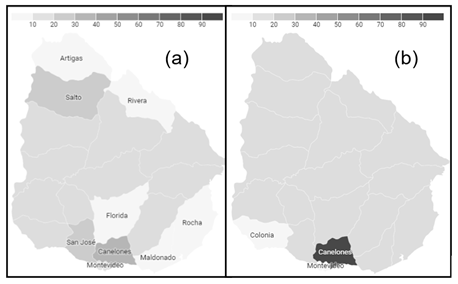
Figure 3: Origin of vegetable production by department as a percentage of the total: (a) conventional, (b) ecological
RAU farms represent 1.7% of the total number of horticultural farms in the country, and 2% of the national vegetable sales. The sale of organic fruit and vegetables accounts for 3.3% of the products marketed in the Metropolitan Agri-Food Unit (UAM in Spanish), the main wholesale market in the country, influencing the same area where RAU production is concentrated.
Table 3: Importance of ecological production of vegetables and fruits related to the national total
| Indicator | Ecological production/ national total (%) |
| Horticultural farms | 1.7 |
| Vegetable & Fruit sales | 2 |
| Sales in the metropolitan area | 3.3 |
Source: for national and metropolitan area data19.
3.2 Family farming, women's participation in the RAU
Certified farms employ 348 people, with 76% of them being family members. The number of people working per hectare (employment coefficient) is 0.3 people/h. The majority of farms and production value correspond to family farmers (Table 4), considering farms with less than two salaried workers as family farming 20)(21) .
Table 4: Importance of family farming in the number of farms and sales (2021)
| Importance of family production (%) | |
| Number of farms | 92 |
| Sales | 76 |
Most of the properties have male owners, and women as owners or co-owners are found in 42% of the properties (Figure 4).
3.3 Diversity
A total of 111 different species are cultivated, most of which are vegetables, fruit trees and herbs and medicinal plants (Table 5, diversity of cultivars; specific production data per cultivar is not available). On average, 1.8 different species are grown per hectare and farm.
Table 5: Number of species by crop type (2021)
| Type of crop | Number of species | % by type |
| Vegetables | 60 | 54% |
| Fruit | 19 | 17% |
| Herbs and medicinal | 16 | 14% |
| Other | 8 | 7% |
| Grains | 5 | 5% |
| Forage | 3 | 3% |
| Total | 111 | 100% |
Each farm grows, on average, 8.7 species from 4.7 different botanical families. Commonly cultivated species include tomato, lettuce, pumpkin, sweet potato and potato (Figure 5). Within each species, there is a diversity of cultivars, but no production information is available.
The products with the greatest impact on sales are tomatoes, onions, arugula, pumpkins, leeks, herbs and medicinal products, sweet potatoes and garlic. Due to the extensive diversity of species, the category others (comprising 42 species) is the most relevant (Figure 6).
Seeds are cultivated by 75% of the farms for at least one crop, and, on average, there are 6 species per farm. Most farms produce seeds for 1 to 10 species (Figure 7). A total of 77 different species are produced.
Eighty-seven percent of the farms indicate having natural areas as a refuge for wildlife, but the available information does not allow quantifying the surface area or the type of vegetation in them.
3.4 Soil management
The most common soil management practices are the use of green manures, crop rotation, and the application of compost and biofertilizers (Figure 8).
Forty-five percent of the farms use manure and/or compost, with only 4% applying fresh manure to the crops.
More than half of the farms use poultry manure (hens and chickens), see Figure 9.
3.5 Commercialization
Direct-to-consumer sales channels are the most frequently used by farmers. Together, they account for 42% of sales, followed by supermarkets (Table 6).
Table 6: Importance of commercial channels: frequency of use and weight in total sales, in percentage (2021)
| % of total farms | % of total sales | |
| Direct distribution to consumers | 61% | 22% |
| Farmers markets | 60% | 20% |
| Supermarkets | 37% | 40% |
| Other | 29% | 4% |
| Intermediary | 24% | 3% |
| Retail stores | 20% | 4% |
| Conventional market | 17% | 4% |
| Agribusiness raw material | 14% | 2% |
In conventional fruit and vegetable production, on the other hand, between 50 and 80% is channeled into the wholesale market, followed by sales to supermarkets and other retailers (Table 7)22.
Table 7: Share of commercial channels in ecological and conventional fruit and vegetables (% of sales) (2021)
| Commercial channel | Ecological | Conventional |
| Direct-to-consumer sales | 46 | 0 - 2 |
| Direct selling to retailers | 40 | 9 - 28 |
| Selling to wholesale and intermediary markets | 7 | 50 - 80 |
| Other | 6 | 7 - 20 |
Source: for conventional fruit and vegetables22.
The prices that farmers receive for the sale of organic food are higher and more stable throughout the year compared to the conventional market (Figure 10).
4. Discussion
4.1 Importance of RAU production
The weight of production on agroecological family farms and its growth, for the main crops produced on farms certified by the RAU, is similar to what is observed internationally. RAU farms represent a minority of the country's properties. In the case of vegetable producers, these values are similar to those observed at the international level, measured by the area under organic farming23. When measured as a share of sales, the weight of organic food is greater. In Argentina, the organic sector shows similar characteristics, with a low share in the total agriculture, but with growth in the area and number of certified farms24.
Organic production has been growing steadily since 2000.
Organic food sales reached USD 6.4 million and grew by 780% between 2000 and 2021. For the period with available information on the evolution of the number of certified properties, between 2012 and 2021, sales grew by 210%. It concentrates on vegetables, herbs and medicinal plants. Fruit and grain production is very low, and there is no information on certified animal production (Table 2).
The number of certified properties increased significantly between 2015 and 2016, and then moderated its growth, decreasing slightly in the last year (Figure 1). Although the RAU has been certifying since 2005, in 2015 it obtained official authorization from the Ministry of Livestock, Agriculture and Fisheries (MGAP, in Spanish)25. Concurrently, at the national level, in 2015 a campaign was launched to implement a National Agroecology Plan through public policies, with RAU being one of its main promoters 8)(25) . The recognition of certification and the campaign for the National Agroecology Plan gave legitimacy and greater visibility to the RAU, which may have favored the entry of new farms into the system. Another driver to consider is the domestic market demand for organic food, which outpaces supply growth 18)(26) . These events are part of the key factors in the scaling processes of agroecology, such as organizational strength, favorable markets, and public promotion policies27.
The stagnation in the number of certified properties in recent years may be linked to changes in MGAP policies regarding certification associated with the change of government in 2020, whereby the RAU qualification was suspended in 2021 pending the approval of new regulations. This has generated uncertainty in the sector28, contradicting what was approved in the National Agroecology Plan in accordance with Law 19.717, which incorporates the strengthening of PGSs as a proposal25.
The increase in the number of farms in the period analyzed (2012-2021) contrasts sharply with the disappearance in the country of smaller-scale farms and in the most relevant items for organic production. The last national agricultural census recorded a loss of 22% of all farms, concentrated in establishments of less than 20 hectares, where most of RAU's properties are located. In horticulture, the loss of land and surface area in 2011 reached half of what existed in 200029. This trend shows no signs of reversing in the years after the last general agricultural census, whether considering the value of production for vegetables and fruit trees30 or the number of farms and area (information gathered from an unpublished draft by MGAP-DIEA: “Evolution of the number of farms and area in the Fruit and Vegetable Registry up to 2023”).
The growth of production at rates higher than the increase in the number of farms, 120% against 210%, respectively (Figure 1 and 2), indicates that production per farm has increased, which may be due to an increase in productivity, cultivated areas, or a combination of both. With the available data, it is not possible to draw a conclusion on this aspect.
The concentration of production in some items, such as vegetables, and geographically in the metropolitan area -and the centralization of consumption- indicates certain limits in the development of the sector. Opportunities arise to diversify productive areas, for example, towards the production of fruit trees, grains and animal production, where there are already incipient experiences within the RAU. Uruguay stands out for its certified area dedicated to livestock production, which represents 19.6% of the national agricultural area, making the country the sixth in the world in the proportion of organic area23. Organic livestock farming, unlike RAU-integrated systems, is concentrated on larger-scale business farms, articulated by agro-exporting companies31. Livestock farming is one of the main productive sectors in the country, and most family farmers are livestock producers21, making this sector potential for adopting agroecological proposals.
A greater territorial coverage can also be expected, considering the trend of creating new RAU regions in the north of the country and the territorialization proposals of the National Agroecology Plan32.
4.2 Production styles, autonomy and contributions to sustainability
The vast majority of the farms and production of the RAU respond to family farming. The employment generated on these farms, measured in workers per hectare, is high compared to livestock and agriculture, and in line with the labor intensity in horticulture, the main sector within the RAU33.
The participation of women as landowners is higher compared to national data. Fifty-eight percent of RAU properties are exclusively owned by men, while the national rate is 76%34. The other 42% of properties have women as owners or co-owners. Most of the members of the RAU are women (53%)14, indicating a gap between participation and farm ownership; the reasons for this gap deserve further research.
The diversity of cultivated species and habitats, including spaces dedicated to wild species, is part of agroecology's strategies to conserve and increase biodiversity, with positive impacts on the regulation of pests and diseases, pollination, soil and water conservation, nutrient recycling, or mitigation and adaptation to climate change and variability 35)(36)37)(38)39)(40) 41.
The diversity of cultivated species in the analyzed farms (an average of 8.7 species per farm) is similar to that found in an analysis conducted for 16 cases of horticultural farms in the south of the country, including organic and conventional farms42. RAU farms cultivate 60 different vegetable species, a value that can be considered high compared to the 34 vegetable species for which there is information in the national agricultural census29.
Compared to organic and low-input European horticultural systems in Austria and the Netherlands, RAU farms are more diverse, both in terms of the total number of species cultivated and the number of species cultivated per hectare41. No information is available to estimate equity in the distribution of these species. Detailed information on the diversity of cultivars for each species is also lacking.
There is no national information to compare the number of species for which seeds are produced per farm or the number of farms that allocate areas for biodiversity conservation, but tentatively, high values are observed in RAU farms (75% of farms produce seeds and 87% of farms have conservation areas). Seed reproduction and selection on farms are crucial because they contribute to the conservation and development of local varieties, enhancing the resilience and sustainability of agroecosystems43.
The worldwide loss of biodiversity in the last 50 years is at an alarming level, and one of the main drivers is habitat degradation associated with agriculture44. Uruguay has a National System of Protected Areas that covers 0.9% of the continental surface, a very deficient value compared to national commitments, which aimed to reach 15% of the continental area under protection systems by 2020 45)(46) . Integrating conservation into agroecosystem management not only aligns with agroecological management principles but also contributes to biodiversity conservation, a topic of general interest to society 5)(47) . There is no data available to estimate the area of conservation areas on farms or their qualifications (for example, spatial distribution and connectivity, typology, or degree of naturalness of these areas), aspects that deserve to be deepened.
Soil management is one of the key practices in ecological farms. Soil health is sought through a few guiding principles: keeping the soil covered as much as possible, growing living roots year-round, using plant diversity to improve soil microbial diversity, and managing with less soil disturbance. Other complementary practices are used to increase the effect of rotations and cover crops: the use of compost and manure, or organic and natural mineral fertilizers48.
Green manures (cover crops), rotations, compost, manure and biofertilizers are widely used practices on RAU farms. Compared to conventional farms, the use of compost and biofertilizers stands out as differential practices49. The most commonly used manure is poultry manure (chickens and laying hens). Canelones and Montevideo, where most RAU farms are located (85% of farms), concentrate the national production of poultry (92% of stocks), facilitating access to this type of input34. The use of manure from intensive poultry farming is restricted by RAU’s technical standards50. International regulations have different criteria, it is accepted in North American regulations51 and prohibited in European regulations52, where the use of manure from non-organic farms is allowed as long as it comes from extensive livestock farms. In all cases, RAU and international regulations prohibit the use of fresh manure for bromatological reasons, and minimum storage times are required before application to crops.
As Uruguay’s competent authority (MGAP) has recently opted for European regulations53, a possible contradiction arises with this practice, and it seems appropriate to review the origin of the manure used in RAU, given that the information available in the forms does not discriminate whether it comes from organic farms, intensive livestock farming or intensive animal breeding. From the available information, it is not possible to characterize the type of rotations, frequency of tillage or quantities of compost and manure used.
The commercialization of organic food involves a marketing strategy that differs from the conventional industry (Table 6 and 7). Priority is given to those channels that provide greater autonomy to farmers, reducing the burden of intermediaries. In the conventional sector, smaller-scale family farmers are the weakest link in the chain because they depend on intermediaries to access wholesale markets, over which they lack good information and control54. The autonomy achieved in commercialization is a strength for building alternatives to concentration and the loss of sovereignty observed in conventional production, in line with the proposal of authors who, from an agroecological approach, promote local agroecological systems based on agroecology55.
This greater autonomy may explain differences in the prices of organic food, with a tendency to maintain more stable prices throughout the year, unlike the conventional market, which shows greater variation, especially in more perishable products. The price received by organic farmers is higher than that of conventional farms (Figure 10). Prices to consumers were not surveyed, so it is not possible to compare organic and conventional products in this regard.
5. Conclusions
For the first time, comprehensive information representative of agroecological production systems and the domestic market for organic food in the country is presented. This contribution establishes a baseline for the sector that can be updated using similar procedures to those proposed in this research. The data generated and recorded in the regular procedures of the PGS allowed characterizing aspects of organic food production in RAU by generating indicators aimed at understanding the importance of organic agriculture and its contributions to the sustainability and resilience of food production and distribution in our country.
It is a minority sector, concentrated in the production of vegetables and, to a lesser extent, fruit trees, with participation values similar to international ones, and sustained growth in production for the domestic market, although the number of farms has reached a plateau in the last two years. Factors that may have influenced this process of scaling agroecology in the country are discussed.
Family production is largely dominant in RAU, with relatively higher participation of women in land ownership compared to national data, although still lower than the total participation of women in the RAU.
Within the horticultural sector, which is the majority, numerous species are grown throughout the RAU and also on each of the properties. The number of farms that produce their own seeds and those preserving on-farm wild areas is high, contributing to RAU's goals of biodiversity conservation, of general interest.
Soil management practices in RAU farms are in line with expectations for organic farms, although further investigation into the origin of manure used on some farms is necessary, given regulatory restrictions.
The commercialization approach in RAU, for vegetables and fruits, is markedly different from the conventional one, mainly oriented to direct sales to consumers and retailers, with minimal participation of intermediaries. In the conventional sector, small producers are the weakest link in the chain because they depend on intermediaries to access wholesale markets. Prices of organic food to producers are higher and more stable, compared to conventional ones, which can be explained by the greater autonomy of organic farms, contributing to their sustainability and resilience.
New research questions arise, such as determining if there are different production styles among farms and identifying variables that differentiate them. The available information presents limitations for an in-depth understanding of the functioning and structure of agroecosystems or their trajectory, for which it would be necessary to explore other methodologies, such as case studies. These findings are expected to be useful in driving agroecology transition processes and supporting the definition of agendas of various actors linked to agroecology and the national food system, in particular for RAU and its Participatory Guarantee System.














